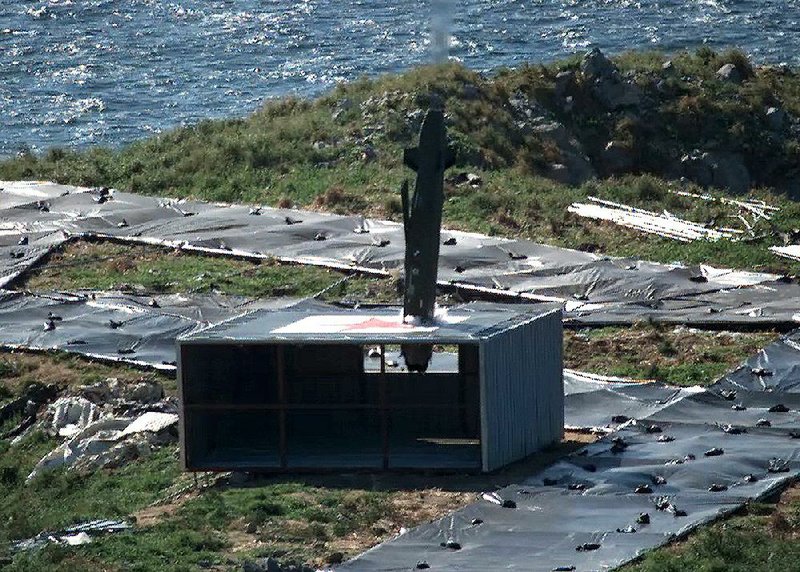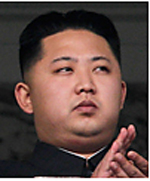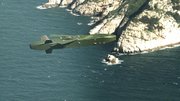SEOUL, South Korea -- North Korea has resumed work at its underground nuclear testing site, defense analysts said, as the country vowed to keep expanding its nuclear arsenal despite the latest United Nations sanctions.
The defense analysts also said the North's Sept. 3 nuclear test, which Pyongyang said was of a hydrogen bomb, may have been much more powerful than previously estimated.
In its first official reaction to the sanctions resolution adopted Tuesday by the U.N. Security Council, North Korea's Foreign Ministry said Wednesday that the sanctions would only strengthen the country's resolve to pursue its nuclear weapons program "at a faster pace without the slightest diversion."
The sanctions resolution, adopted in response to the nuclear test this month, was the ninth passed by the Security Council since North Korea's first such test in 2006. If enforced, it would deprive North Korea of 30 percent of its annual fuel imports. It also bans imports of textiles from North Korea, stripping the country of another key source of hard currency.
The North's statement, released through the nation's state media, came at the same time that a group of defense analysts, after studying recent satellite images, said they had detected new vehicles, mining carts and other signs of activity at the Punggye-ri underground nuclear test site in northeast North Korea.
"Such activity, coming shortly after the largest underground nuclear test conducted at Punggye-ri to date [via the North Portal], suggests that on-site work could now be changing focus to further prepare those other portals for future underground nuclear testing," the defense analysts, Frank Pabian, Joseph Bermudez Jr. and Jack Liu, said in a report on 38 North, a website focused on North Korea. The analysts gave no indication that a test appeared to be imminent.
The analysts also said the explosive yield from the Sept. 3 nuclear test may have been as much as 250 kilotons, based on revised estimates of the magnitude of the tremor created by the blast. That would be much higher than most official estimates, which have varied. Japan, for example, gave an estimate of 160 kilotons, while South Korea's was as low as 50 kilotons.
The analysts said the data appeared to verify the North's claim that it had detonated a hydrogen bomb, a much more powerful device than the atomic bombs it detonated in its early tests. The United States, South Korea and other governments have yet to confirm that the North tested such a weapon, but the Sept. 3 test, the North's sixth, was by far its most powerful to date. Satellite imagery since the test has showed evidence of numerous landslides at the test site.
On Wednesday, South Korea's Nuclear Safety and Security Commission said it had detected traces of radioactive xenon gas from the nuclear test. But the data were not sufficient to determine what type of nuclear device the North had detonated, it said.
The South Korean military said earlier in the day that it had successfully tested a new air-to-land "bunker buster" Taurus cruise missile, part of its effort to increase its ability to destroy key weapons sites and bunkers deep underground where the North's leaders might take refuge.
North Korea's tests have inched the country closer to producing nuclear-tipped weapons that could one day reach the American mainland.
U.S. Defense Secretary James Mattis said Wednesday that he's become convinced that the United States must keep all three parts of its nuclear force, rather than eliminate one, as he once suggested.
Before he took over in January as President Donald Trump's Pentagon chief, Mattis had suggested that the silo-based, long-range weapons, known as intercontinental ballistic missiles, might be expendable.
Others, too, have said the ground-based missiles may no longer be necessary to America's policy of deterrence, and the Trump administration has been reviewing the military's nuclear posture.
On the other hand, Mattis has called the submarine-based component "sacrosanct" and also has said it is necessary to retain the ability to fire nuclear weapons from planes. Those three prongs -- ground, air, and submarine -- constitute what the military calls its nuclear triad.
"I've questioned the triad," Mattis told reporters flying with him to Minot Air Force Base, a nuclear base in northwestern North Dakota, before announcing that his view has changed.
"I cannot solve the deterrent problem reducing it from a triad. If I want to send the most compelling message, I have been persuaded that the triad in its framework is the right way to go," Mattis said.
As North Korea holds more frequent and more powerful tests, the South in particular has ramped up its deterrence efforts.
Shortly after the North's recent nuke test, Seoul announced that it reached an agreement with Washington to remove the warhead weight limits on South Korean ballistic missiles, which under a bilateral guideline could be built for a maximum range of 497 miles.
A pre-emptive strike against Pyongyang's leadership is widely seen as the most realistic of the limited military options Seoul has to deny a nuclear attack from its rival.
Information for this article was contributed by Choe Sang-Hun of The New York Times and by Kim Tong-Hyung, Hyung-jin Kim and Robert Burns of The Associated Press.
A Section on 09/14/2017


